Photos and Stories from a Private Culture and Wildlife Safari
A picture is worth a thousand words, and the story behind a picture is priceless.
We sat down with Jason Zucco recently, a talented photographer and professional digital tech who traveled on a private safari with his wife Eliza during the green season in March.
Jason has worked in the photography industry for years, and his Tanzania photography portfolio reflects what you would expect from a tenured pro.
On private safaris, you have an incredible amount of autonomy during game drives and direct communication with your guide. Jason and Eliza took advantage of both to create something truly unique – an adventure that balanced wildlife viewing with several intimate cultural experiences.
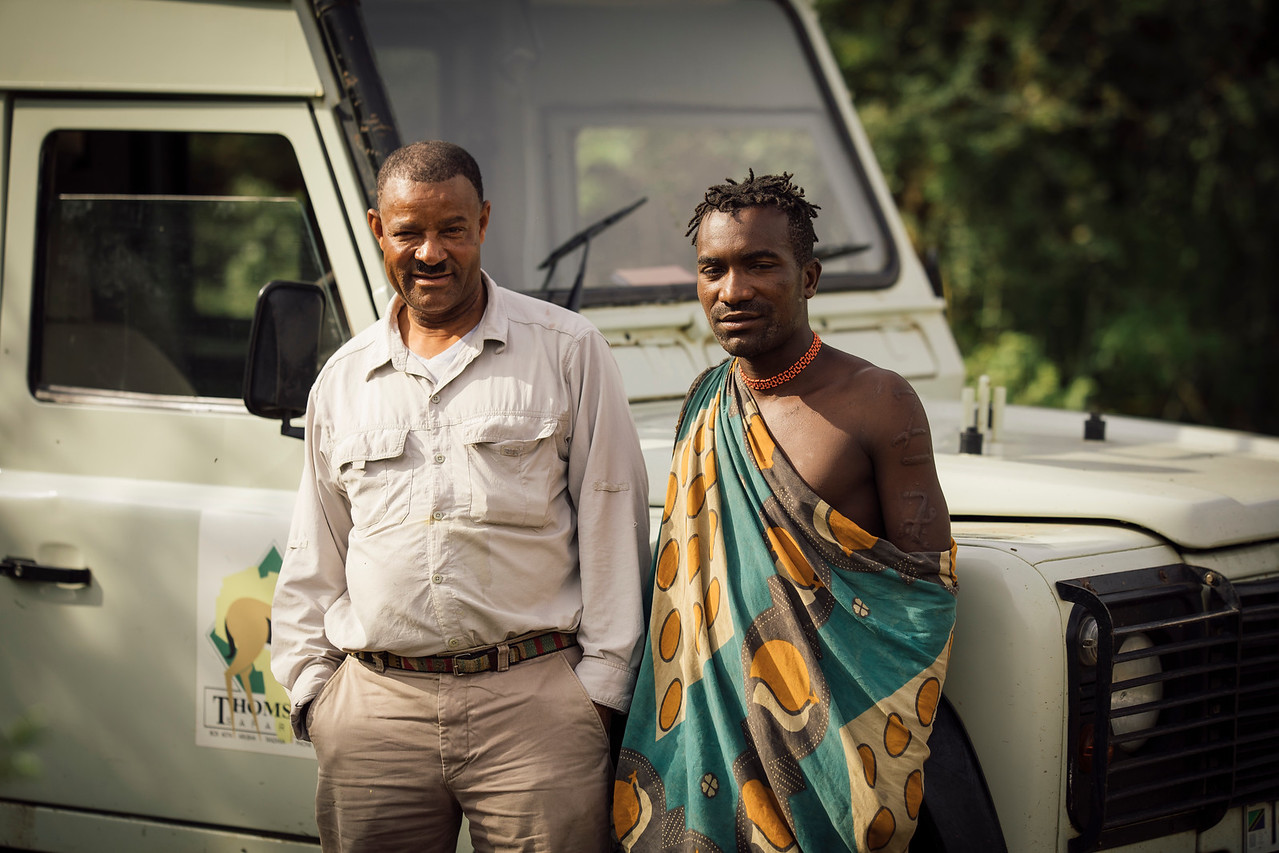 Samson (left) poses for Jason in front of the Land Rover
Samson (left) poses for Jason in front of the Land Rover
We paired them with Samson Maspana, a veteran guide of nearly 30 years who also worked as a field assistant for Harvard anthropologist Lars Smith during his studies of the Hadza. The Hadza are a Tanzanian ethnic group considered to be the world’s last full-time hunter-gatherers.
With Samson’s help, they would visit – and communicate with – the Datoga, the Hadza and the Maasai. He would also snap a few incredible wildlife photos. We wanted to discuss both to learn the stories behind Jason’s photography.
Going in the Green Season
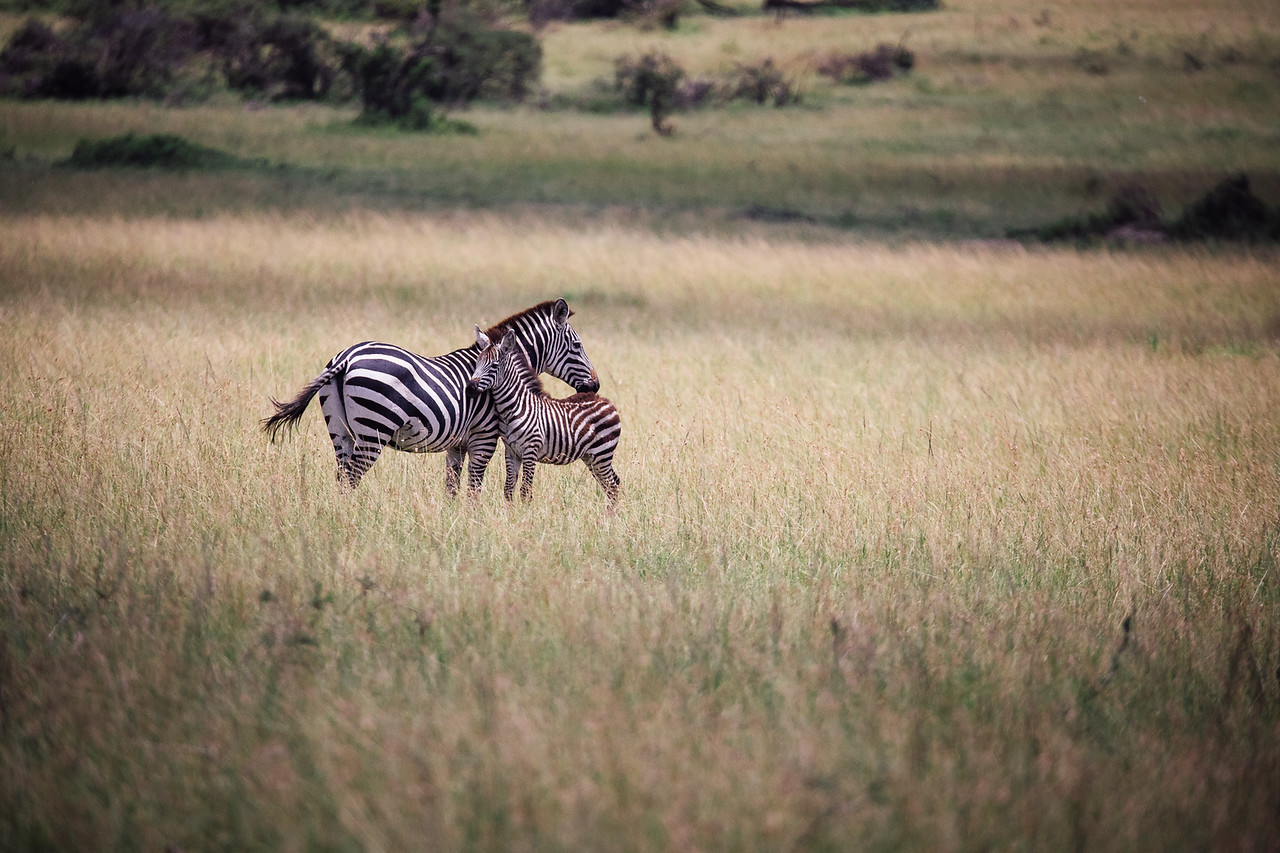 A zebra foal grazes with its mother.
A zebra foal grazes with its mother.
“It was put to us this way: It’s a happy time of year for the people, and it’s a happy time of year for the animals,” Jason recalls, explaining why he and Eliza traveled during the green season. “Water is abundant, and food is abundant, and everyone’s well-fed. Seeing places that, normally when you see them, are brown and dry… seeing them all green and lush is really fun.”
Baby animals and verdant plains are a constant sight this time of year, but there’s one thing missing from the parks.
“There’s fewer safari vehicles, especially in places like Ngorongoro,” Jason said. “Samson was telling me, ‘this is crazy. There are five vehicles here, and there’s normally like 80.’”
And while more frequent rains can affect game drives, a Serengeti drizzle actually provided the backdrop to one of Jason’s favorite shots.
Wildebeest in the Rain
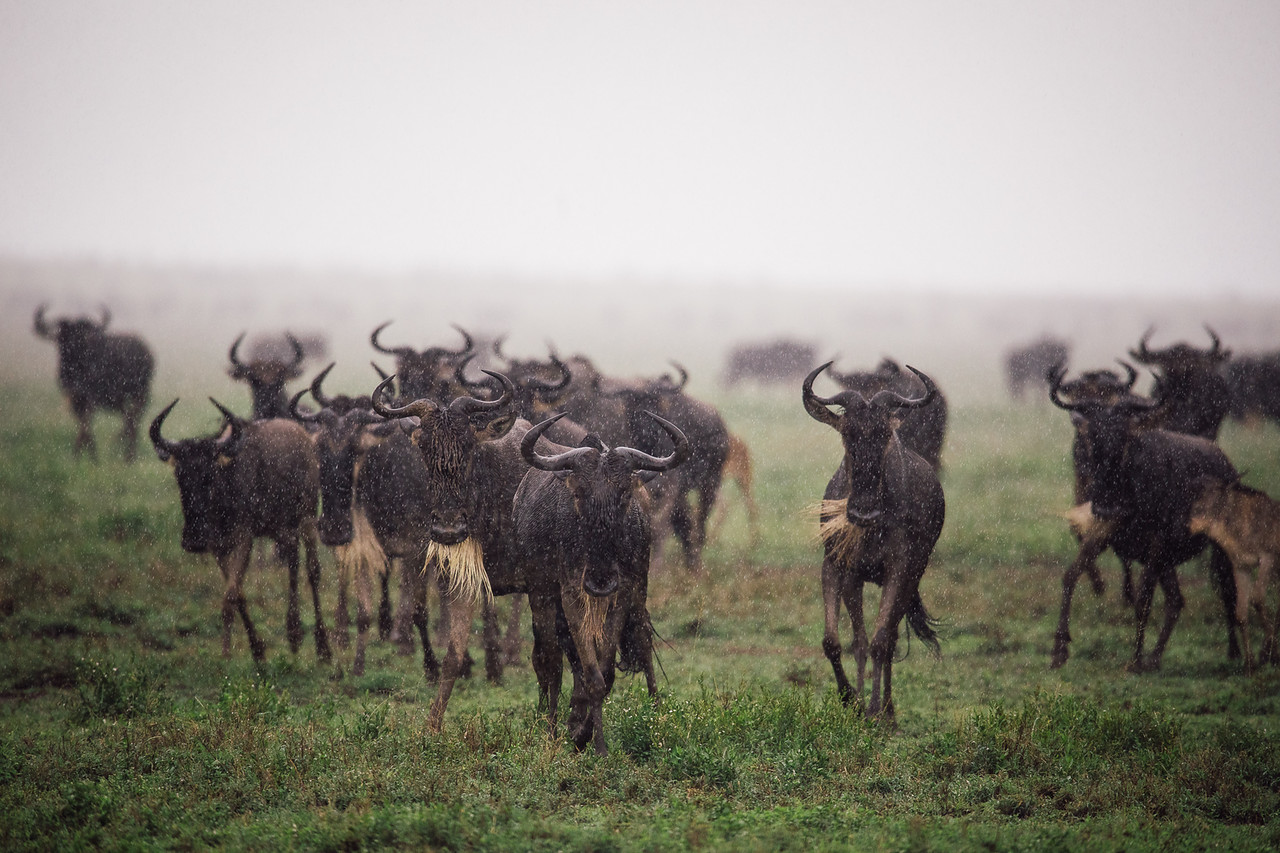 A small heard trots through the morning mist in the southern Serengeti, plodding head-on toward Jason’s vehicle.
A small heard trots through the morning mist in the southern Serengeti, plodding head-on toward Jason’s vehicle.
“This was one of my favorites, and it was 100 percent Samson,” Jason recalls. “He told me to wait a second and maneuvered us in such a way that they were just all coming right at us.”
Samson knew many of the cats would be hiding that morning because of the rain, so he planned a big drive around the park instead.
“We went down some roads that definitely don’t get used that often, and it was really fun,” Jason says with a laugh. “Samson took us out of the southern gate to a different area and told us, ‘something tells me we might catch some of the migration around here.’”
In the Ndutu region just south of the Serengeti, drivers can leave the road more liberally, allowing Samson to reposition the Land Rover just right for the photo.
“The herd was coming straight for us, and it just started pouring rain. It just made for a really cool shot,” Jason said.
Introductions with the Datoga
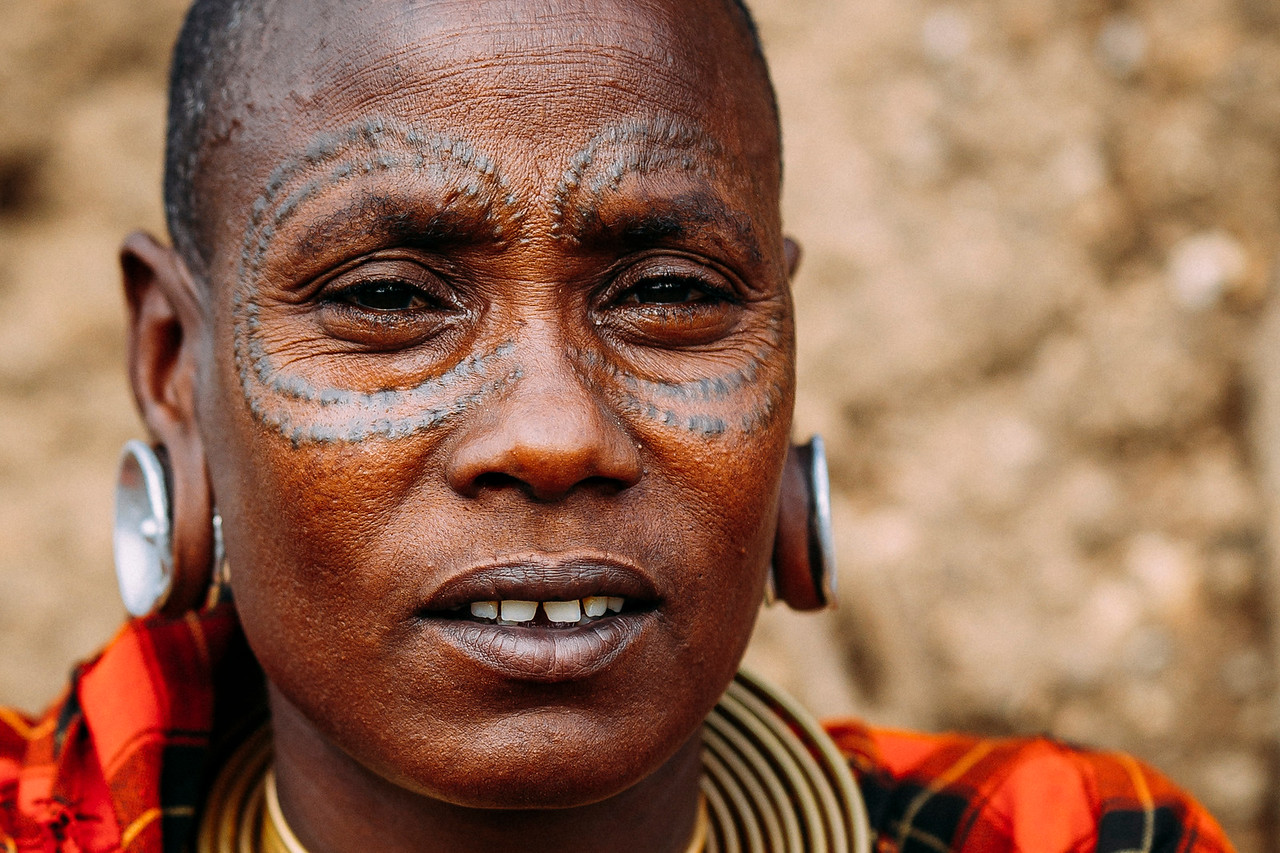 Jason shares his first photo from his experience in one of the Tanzanian villages – a closeup of a Datoga woman.
Jason shares his first photo from his experience in one of the Tanzanian villages – a closeup of a Datoga woman.
Jason approaches the people in his photos with a great deal of care. Etiquette, he says, is very important – making sure you’re polite and considerate and always treating people with respect.
The Datoga do blacksmithing, taking the scrap metal they find to make useful items that can be traded with other villages. They’re also very interested in tattoos, which many of the people have.
Jason and his wife are tattoo enthusiasts as well; both sport two sleeves of tattoos down either arm.
“They were intrigued with the color and how smooth my tattoos were. It was almost like they were there to see us,” Jason said.
 A totoga woman puts in Jason’s ebony ear plugs.
A totoga woman puts in Jason’s ebony ear plugs.
“They also stretch their ears, and my ears are stretched out a bit, so they wanted to see that. I had taken one of my plugs out and gave it to this woman,” Jason said.
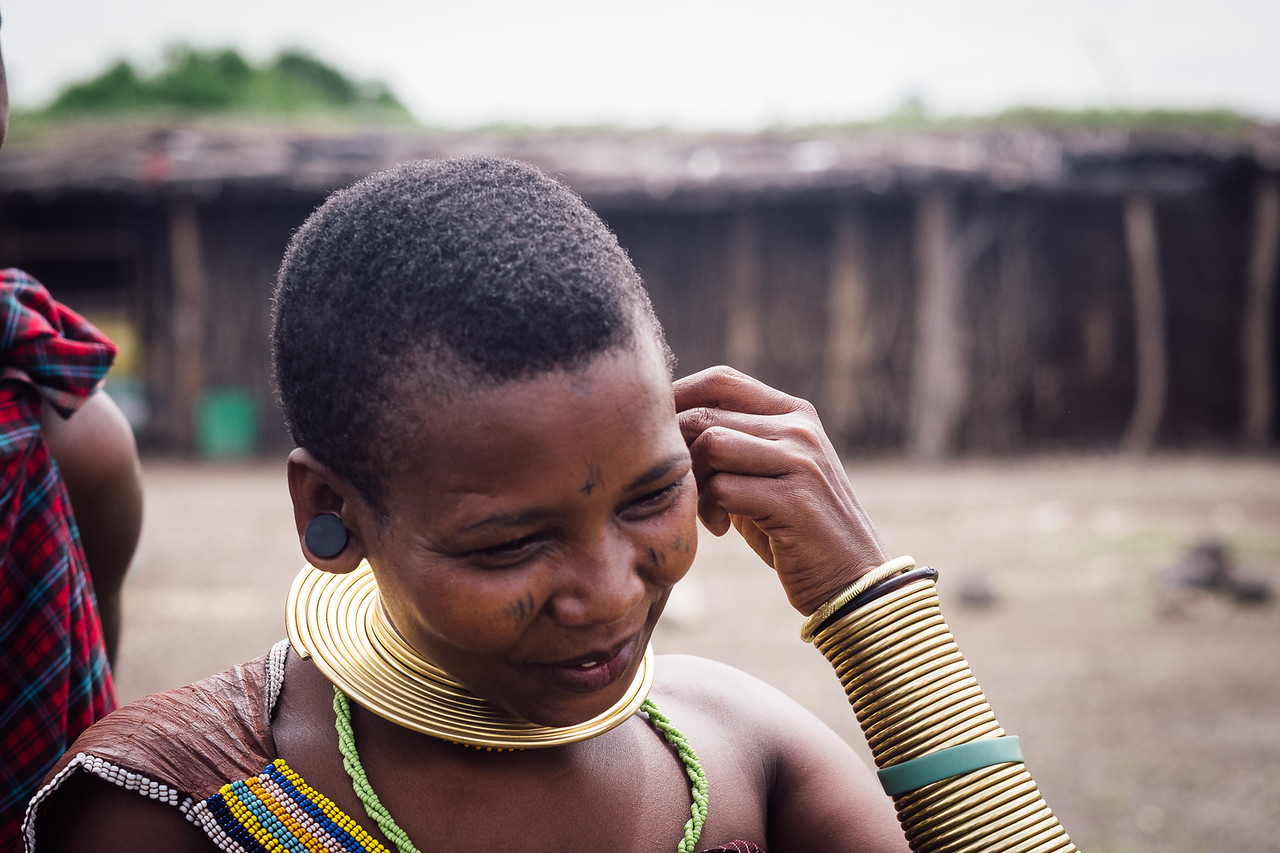
“She put it in her ear, and I told her she could have it. It’s actually kind of ironic because the plugs are made from ebony, so they had come back from where they came.”
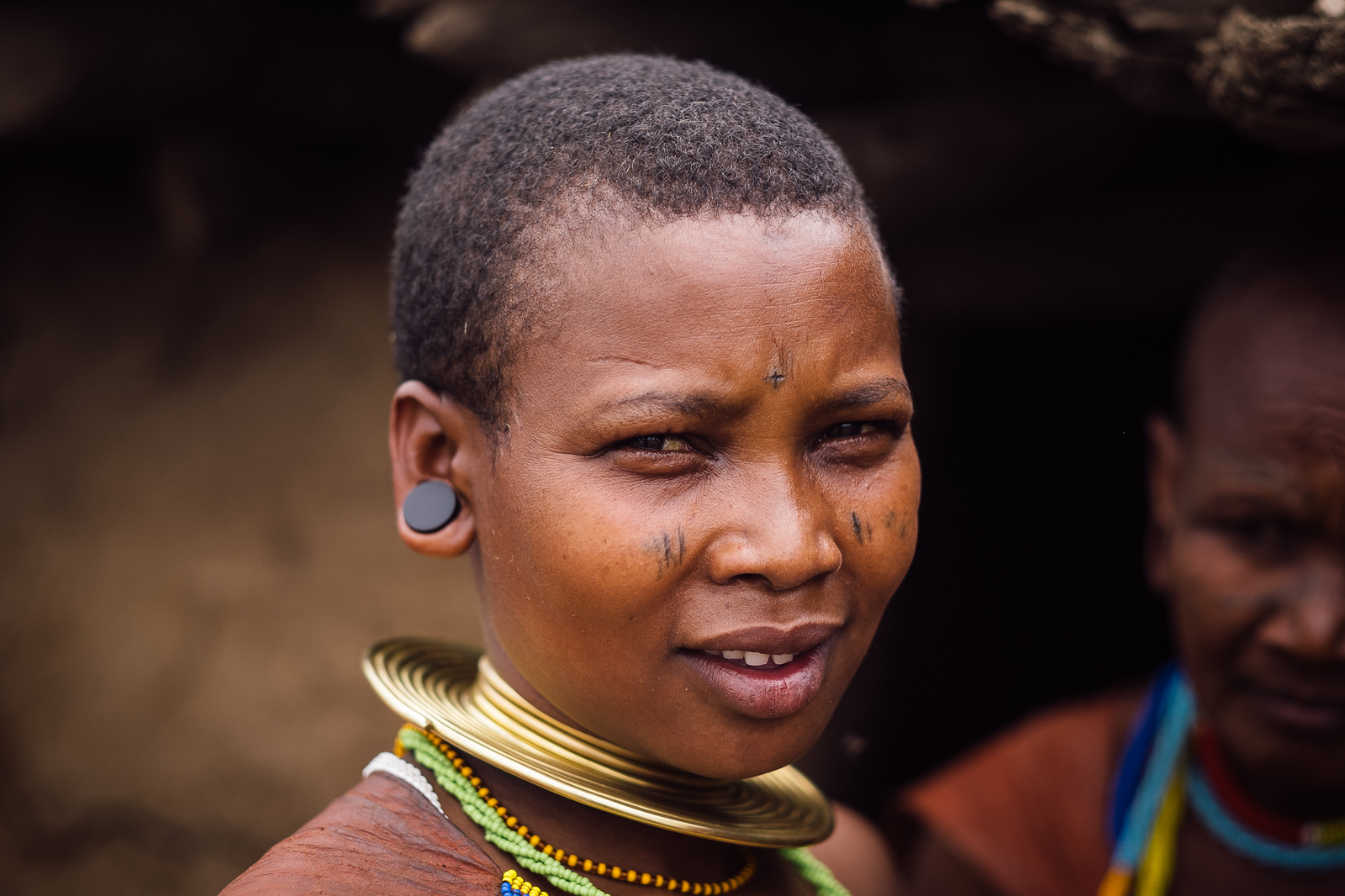 The Datoga woman poses with her gift in Jason’s final shot of the exchange.
The Datoga woman poses with her gift in Jason’s final shot of the exchange.
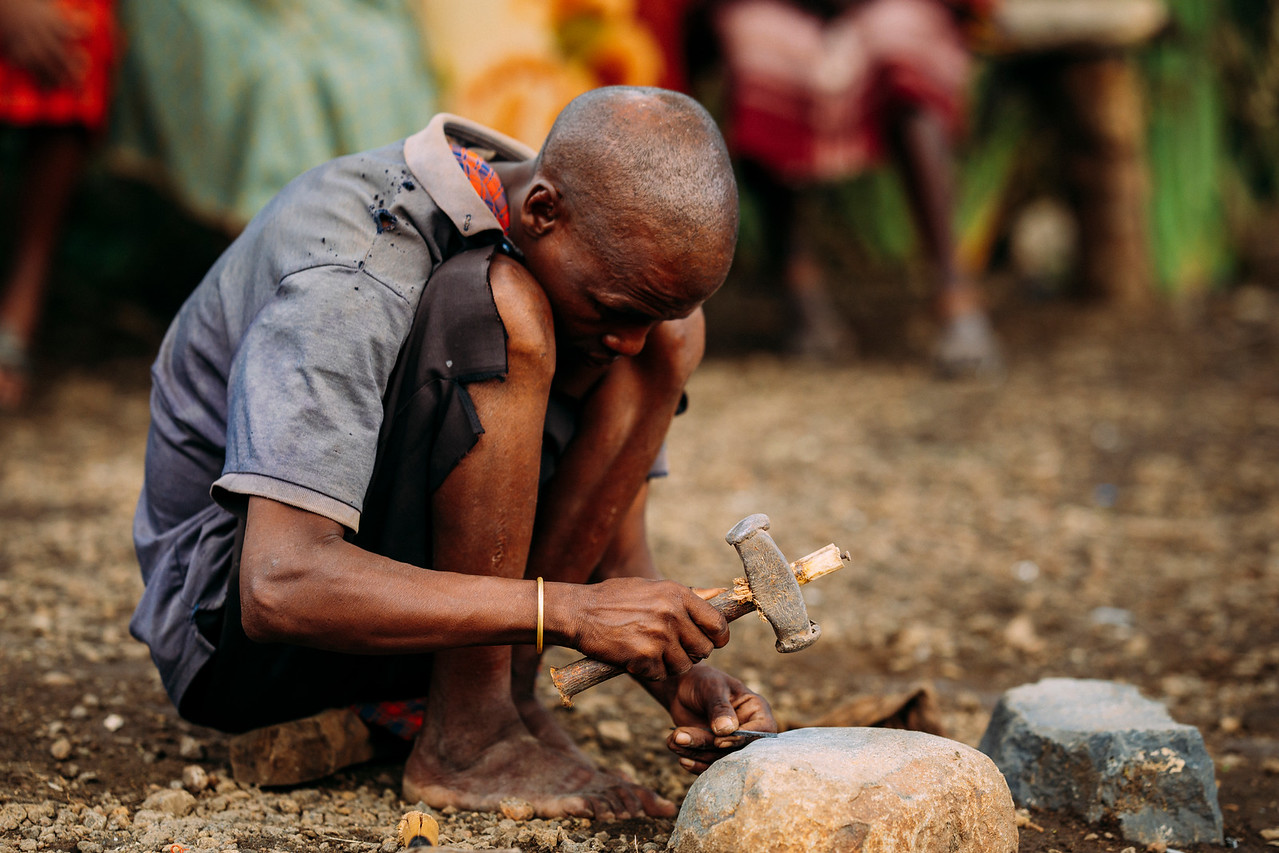
Aside from bracelets, earrings and other trinkets, the Datoga also make arrowheads.
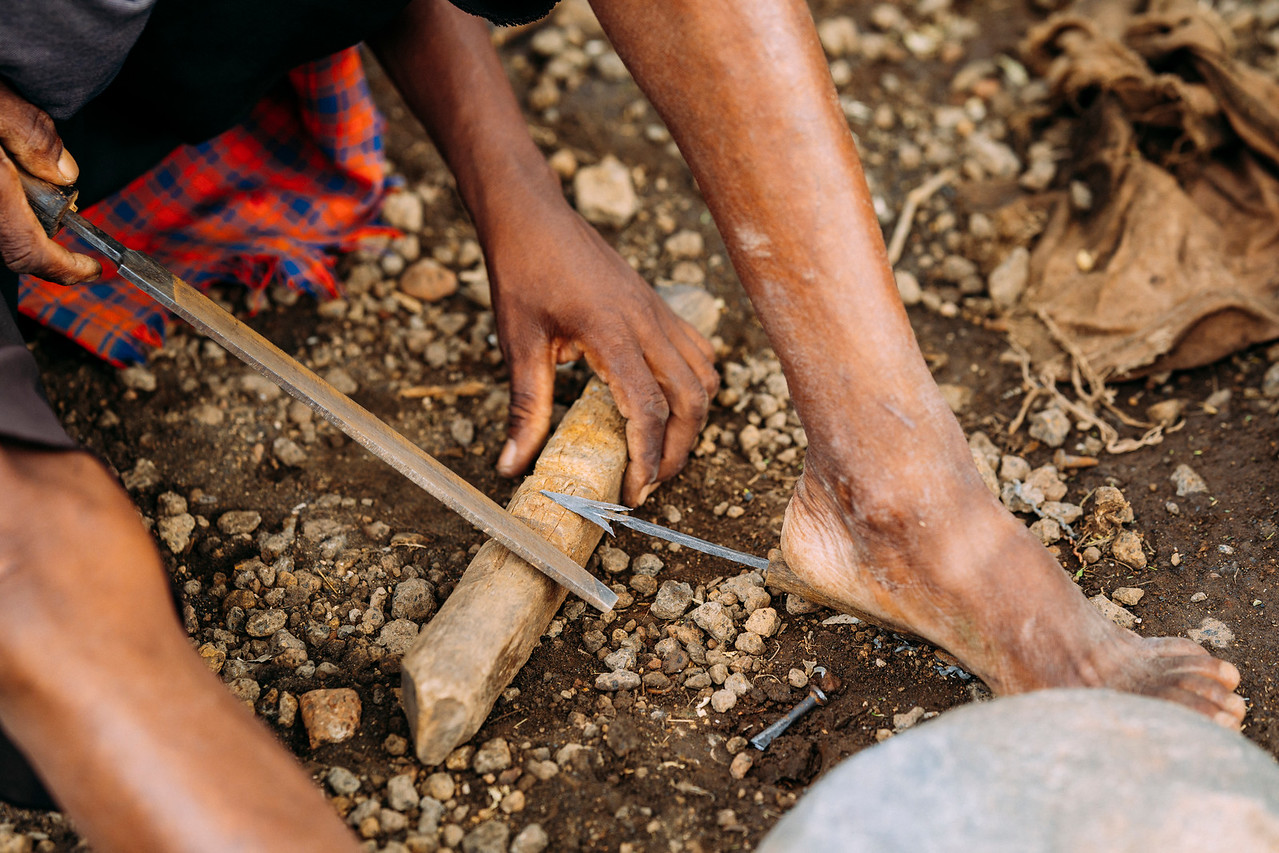
Jason and Samson bought a few to take to the next village, where the world’s last hunter-gatherers live.
Hanging Out with the Hadza
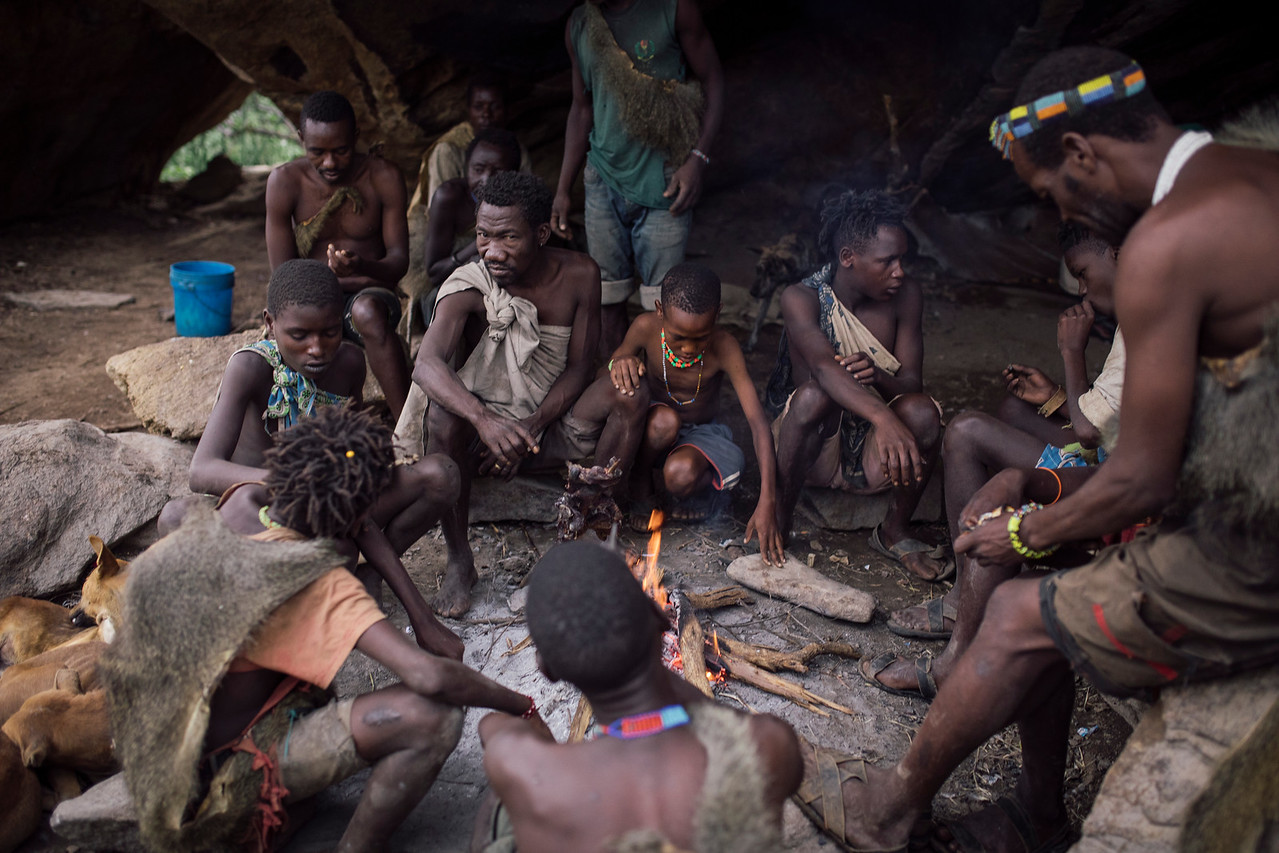 A group of Hadza gather by the morning fire for a kudu barbecue breakfast.
A group of Hadza gather by the morning fire for a kudu barbecue breakfast.
The Hadza like Datoga arrowheads because they don’t work metal themselves. The arrowheads are very useful for hunting. Samson, Jason and Eliza gave them to the village as a gift during the visit.
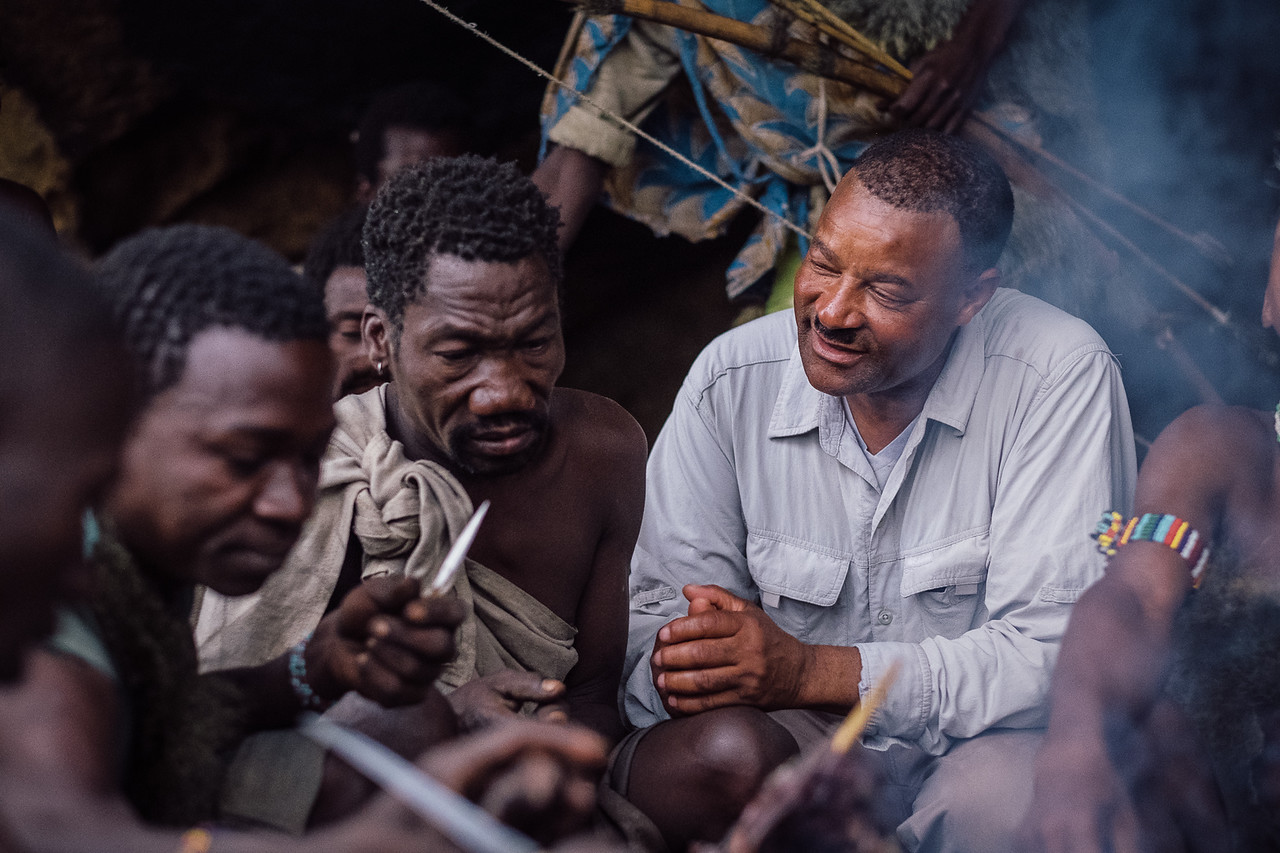 Samson chats with a friend.
Samson chats with a friend.
Visiting the Hadza was a special opportunity for Samson as well as Jason and Eliza. Samson went to live with the Hadza after completing school, learning their language of Khoisan, a click language, and gaining the experience for his work with Lars Smith later.
“It’s cool to have a guide that speaks the language. It’s pretty incredible,” Jason said.
Over a few days leading up to the Hadza meeting, Samson taught Jason and Eliza a few words of Khoisan – just enough to greet some of the people.
“It was really great to work with Samson beforehand. He was very good at helping us with the etiquette,” Jason said.
Samson’s history also gave the visit a special personal element as well.
“[Samson] was excited to see them just because he could run into old friends,” Jason said. “It was an opportunity for him to hang out with people he knew.”
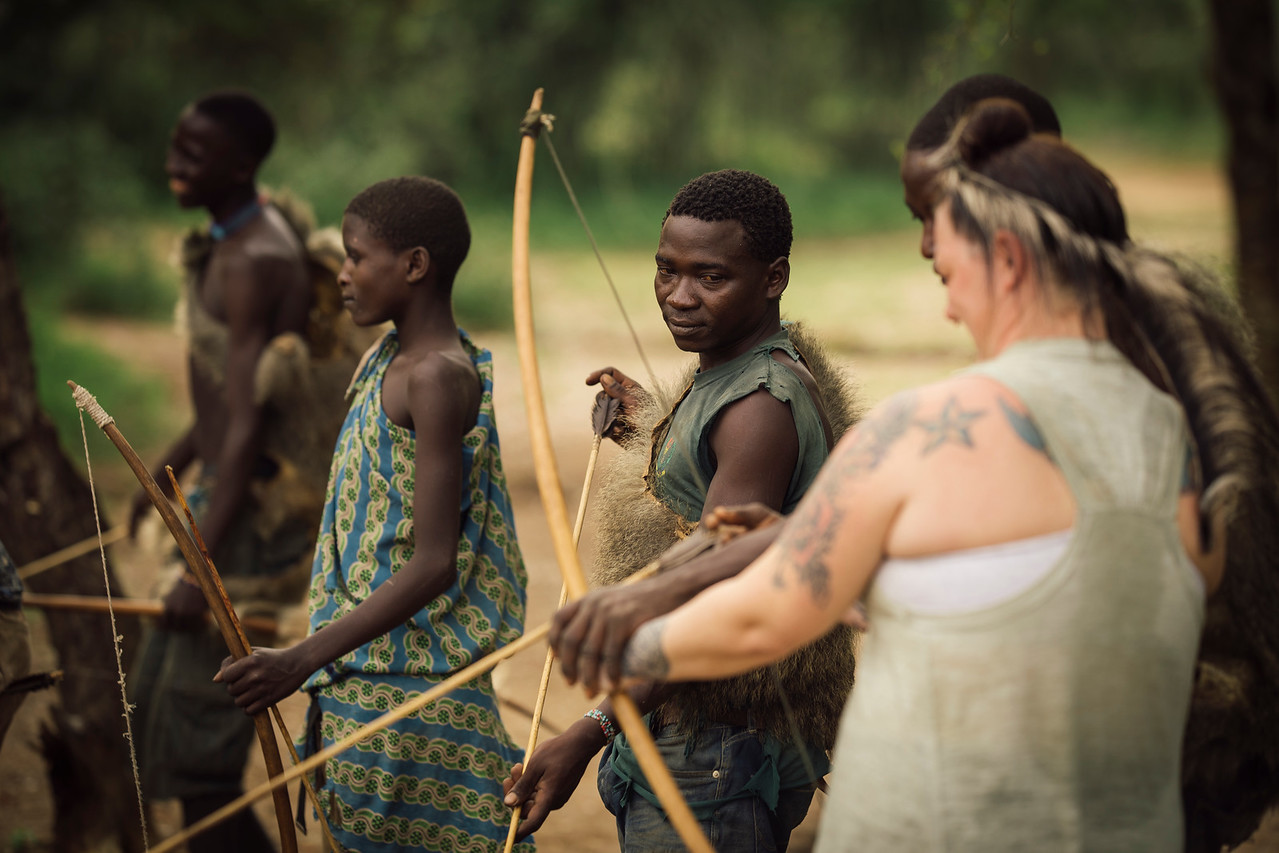 Jason’s wife Eliza learns to shoot a bow with the Hadza hunters.
Jason’s wife Eliza learns to shoot a bow with the Hadza hunters.
This may have helped Jason and Eliza enjoy a truly authentic experience with the Hadza. While some villages treat tourists differently, Jason and Eliza didn’t feel that way during their visits.
“It really felt like we weren’t intruding. They didn’t all of a sudden become quiet when we got there or anything like that,” Jason said. “It was like we weren’t even there. I couldn’t imagine it ever going down like that.”
Meeting the Maasai
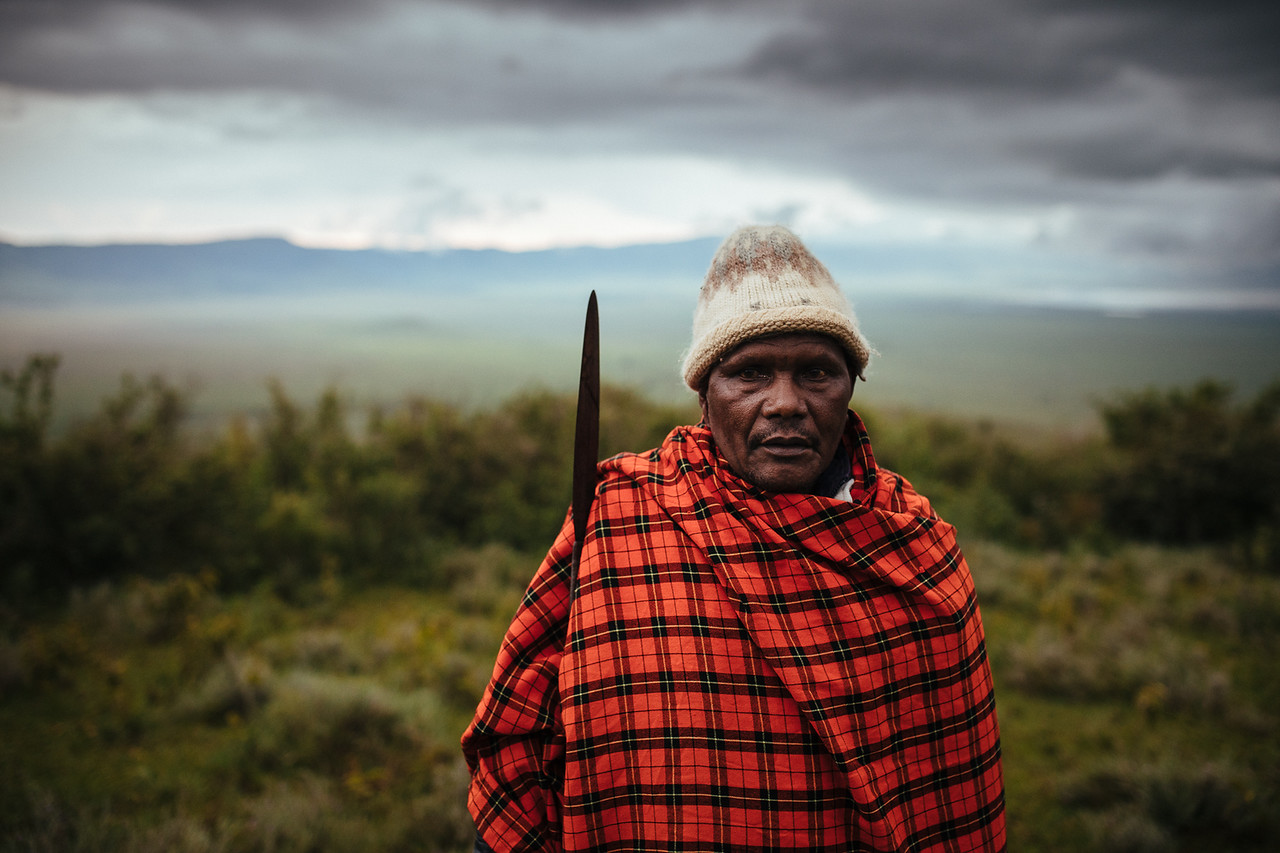 A Maasai askari, or guard, stands with his spear by Ngorongoro Crater.
A Maasai askari, or guard, stands with his spear by Ngorongoro Crater.
Being alert is an important part of the safari experience. A variety of individuals may keep watch during a trip, so elephants and other wild animals don’t surprise anyone.
This Maasai askari was one person keeping watch during the trip.
“We got to the rim of the crater, and I asked if I could take his photo and he put on his robe, grabbed his spear and posed for me,” Jason said.
Jason also received one of his favorite souvenirs from this askari guard as well – an ebony club he carried during the walk.
“I asked him where I could get one of those, and he just said, ‘would you like this one?’” Jason said. “I was like, yeah. It was cool that he sold it to me. I was very happy.”
Closing Advice
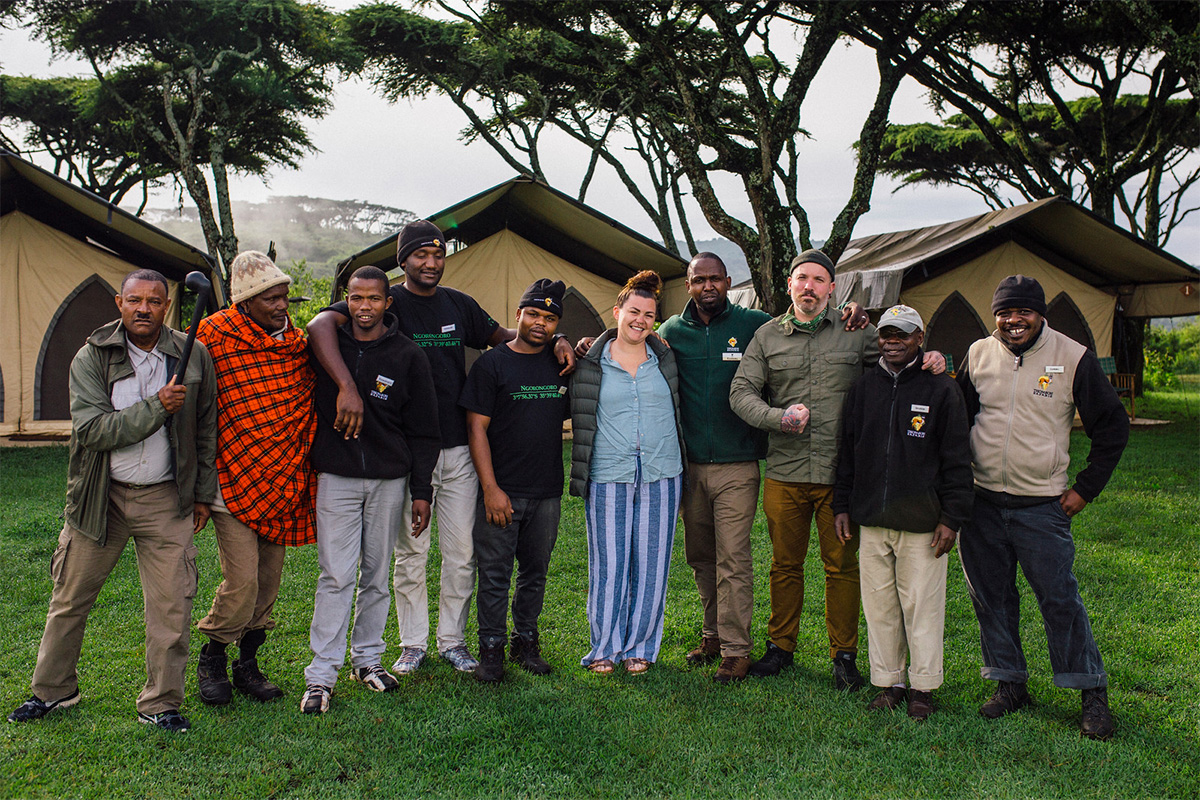 Jason and Eliza with Ngorongoro Nyumba Camp crew.
Jason and Eliza with Ngorongoro Nyumba Camp crew.
Despite his many photos, Jason encourages safari travelers to try and put the camera down and be present as much as possible.
“There is no picture that’s going to be worth what you’re seeing with your own eyes. Always keep that in mind,” Jason said. “Well, that, and maybe bring a backup. Like, bring two cameras because you know… you never quite know what could happen!”

